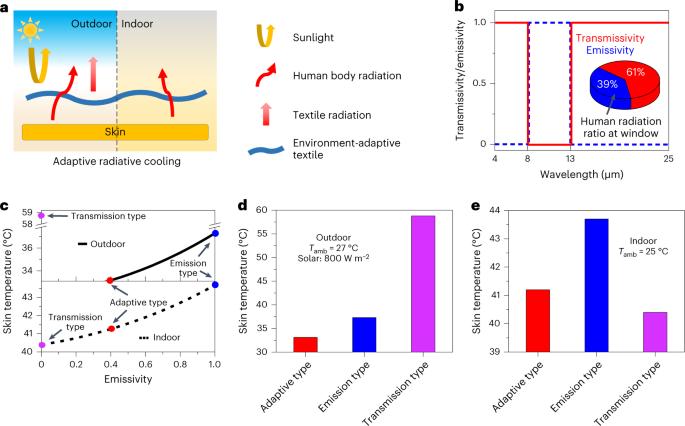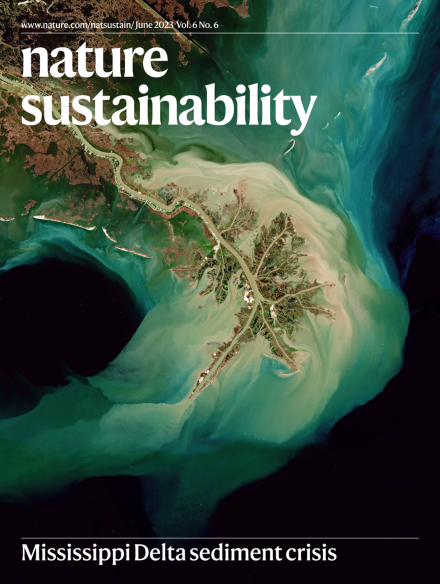An all-weather radiative human body cooling textile
IF 25.7
1区 环境科学与生态学
Q1 ENVIRONMENTAL SCIENCES
引用次数: 0
Abstract
Radiative cooling textiles dissipate human body heat without any energy input, providing a sustainable means for personal thermal management. However, there is still a lack of textile materials to support efficient cooling in varied outdoor and indoor environments. Here we show a polyoxymethylene (POM) nanotextile design that not only achieves selective emission in the atmospheric window (8–13 μm) but also shows transmission in the remaining mid-infrared wavebands and reflection of sunlight (0.3–2.5 μm). As a result, the POM textile achieves efficient radiative human body cooling both outdoors (under sunny and cloudy conditions) and indoors (0.5–8.8 °C lower than typical textiles). Moreover, the textile design shows favourable wearability and outperforms its commercial counterparts when used as protective clothing. The POM material provides both indoor and outdoor human body cooling and introduces new possibilities in the rational design of next-generation smart textiles and other applications supporting sustainability. Radiative cooling textiles provide a sustainable means for personal thermal management. Here the nano-textile design realizes an unprecedented combination of human body cooling in both indoor and outdoor conditions without compromising wearability.

一种全天候辐射人体降温纺织品
辐射冷却纺织品可在不输入任何能量的情况下散发人体热量,为个人热管理提供了一种可持续的方法。然而,目前仍缺乏能在各种室外和室内环境中支持高效散热的纺织材料。在这里,我们展示了一种聚甲醛(POM)纳米纺织品的设计,它不仅能在大气窗口(8-13 μm)实现选择性发射,还能在其余中红外波段实现透射,并能反射太阳光(0.3-2.5 μm)。因此,POM 纺织品在室外(晴天和阴天)和室内(比一般纺织品低 0.5-8.8 °C)都能实现高效的人体辐射冷却。此外,这种纺织品设计还具有良好的耐磨性,在用作防护服时优于同类产品。POM 材料可为室内和室外人体降温,为合理设计下一代智能纺织品和其他支持可持续发展的应用提供了新的可能性。辐射冷却纺织品为个人热管理提供了一种可持续的方法。在这里,纳米纺织品设计实现了前所未有的室内外人体降温组合,同时又不影响穿着性。
本文章由计算机程序翻译,如有差异,请以英文原文为准。
求助全文
约1分钟内获得全文
求助全文
来源期刊

Nature Sustainability
Energy-Renewable Energy, Sustainability and the Environment
CiteScore
41.90
自引率
1.10%
发文量
159
期刊介绍:
Nature Sustainability aims to facilitate cross-disciplinary dialogues and bring together research fields that contribute to understanding how we organize our lives in a finite world and the impacts of our actions.
Nature Sustainability will not only publish fundamental research but also significant investigations into policies and solutions for ensuring human well-being now and in the future.Its ultimate goal is to address the greatest challenges of our time.
 求助内容:
求助内容: 应助结果提醒方式:
应助结果提醒方式:


